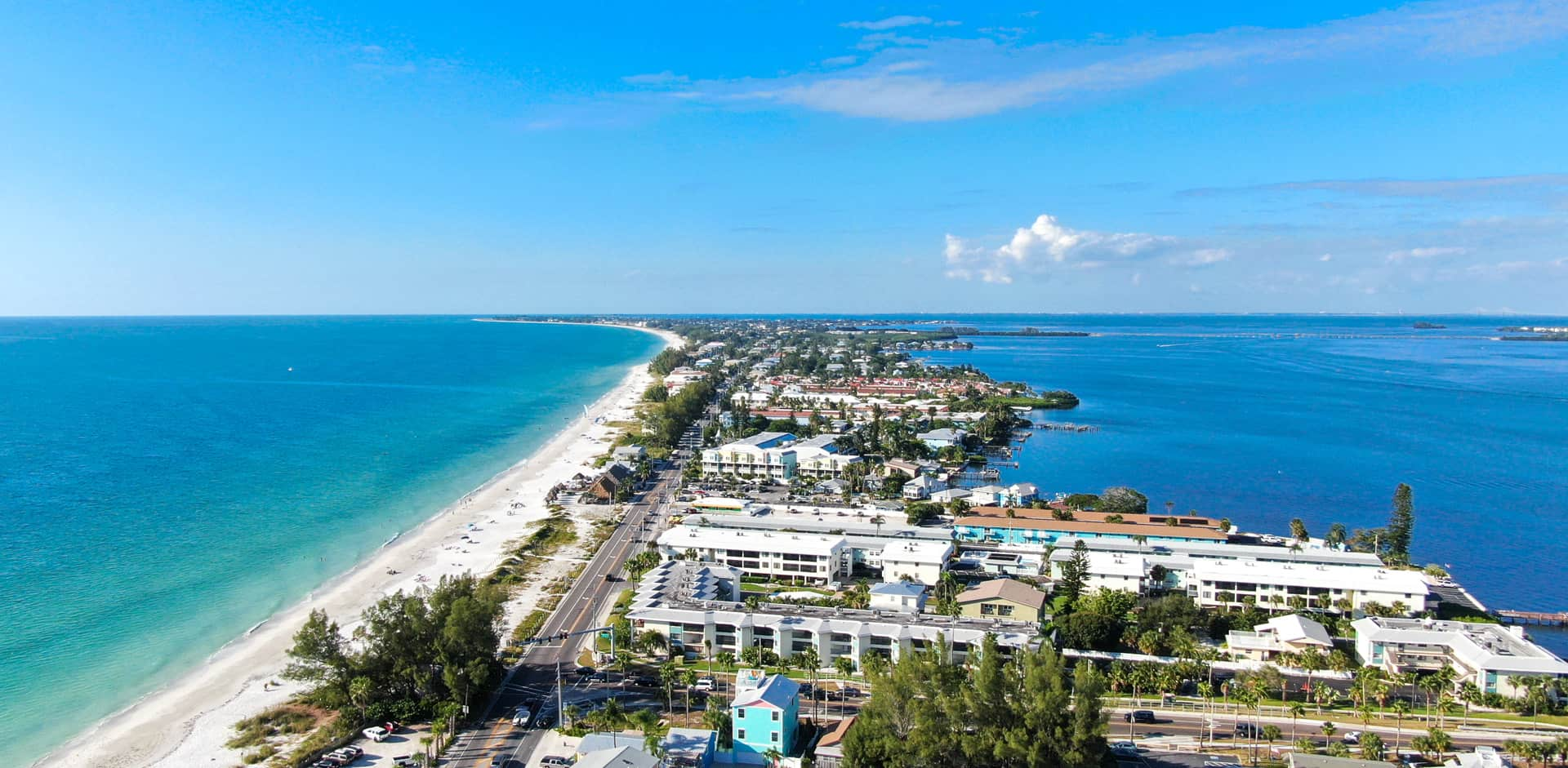With about 1,500 permanent residents in five square miles, Bradenton Beach is a popular and quieter beach destination for Florida travelers. Located on the southern end of Anna Maria Island, the community has consistently sustained that Old Florida aesthetic.
In some ways, Bradenton Beach has hardly changed in the nearly seven decades since its incorporation. Through the years, Anna Maria Island’s history there has been kept alive through historic sites, relics from the past, and stories passed down by locals.
Settling Anna Maria
Anna Maria Island was “discovered” in 1530 by Spanish explorers, and remains one of the earliest American discoveries on the west coast of Florida.
Prior to this, however, the area had been long since discovered by Native Americans, who likely used the island as waterside hunting grounds. It was unlikely that any tribes established permanent residency in the region, preferring the soil in present-day Tampa. Artifacts found in the area date back roughly 2,000 years and include many tools for hunting and fishing.

Just as Native Americans used Anna Maria Island as a temporary destination, so did the Spanish and English for the few centuries after discovery – long-term settlements did not occur until much later. While the Spanish discovered the area in the 16th century, the first official homestead wasn’t settled on the island until the end of the 19th century by George Emerson Bean.
The Anna Maria Island Historical Society explores the lives of the first residents of the island through a walking tour of inspired architecture and the city’s original jail. This iconic historic site is located at 402 Pine Ave., Anna Maria, FL.
Bradenton Beach in the Mid-20th Century
For the first half of the 20th century, most of the population of Anna Maria Island settled in the southern half of the island in Bradenton Beach.
At this time, Bradenton Beach was referred to as Cortez Beach, due to the construction of a wooden bridge in 1921 connecting the mainland Village of Cortez to the island. This area is still referred to as Cortez by some.
Bradenton Beach earned its name by the late 1920s, as city officials wanted it differentiated from the Village of Cortez. The city became officially incorporated in 1952.

By the 1960s, Bradenton Beach had grown tremendously. The bridge brought visitors eager to see the coastal paradise and some put down roots on an island they had come to love.
In 1967, the city established a brand-new drawbridge to invite new generations of locals, while closing the old wooden bridge and converting the island side into a pier.
Over six decades, Bradenton Beach grew from a relatively new discovery only accessible by boat to a bustling and growing island vacation town.
The Bradenton Beach Pier and Bridge
One of the most interesting stories in Anna Maria Island history has to do with the Bridge Street Pier in Bradenton Beach.
The original 1921 wooden bridge that connected what was previously known as Cortez Beach to the Village of Cortez had some of the first automobiles driving along with it. Prior to this, the main way of accessing the area was via boat.

Once it was realized that the original bridge would no longer suffice, the city approved a larger drawbridge to 5th Street North to connect the area to the mainland, which was constructed in 1967.
The older bridge was repurposed as a fishing pier that stands today, where it grew into a local attraction and a cultural hub for tourists and islanders.
Plan Your Next Trip
Our Anna Maria vacation rentals give you front-door access to these attractions on our lively and vibrant island and let you explore the communities here to your heart’s content!
The Bridge Street Pier serves as a reminder of the access point that drew people from all over, converting Bradenton Beach from a settlement of a few families to a world-renowned tourist destination with incredible Bradenton Beach rentals, restaurants, and attractions.
Anna Maria Island has always been known for its pristine beaches, incredible parks and trails, and stunning views of the Gulf of Mexico. These natural attractions are as beautiful today as they were when settlers first came into the area at the dawn of the 20th century.


